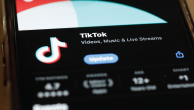Who is buying ads on news sites? The answer reveals part of the trouble the news industry is having findings its way in the new marketplace. Across these 22 news sites, the biggest single advertiser is the news organization itself or its parent. Ads promoting the organization’s own products, known as “in-house ads” in industry terms, accounted for 21% of the online ads studied-more than any category. Most of this came from news sites tied to legacy print products-newspapers and magazines. And -they advertised primarily subscription offers for their print product. There were also occasional ads for online subscriptions (mainly for the tablet or e-reader), bundled print and digital subscriptions, and ads promoting their Facebook pages and Twitter feeds.

While ads from the news organization itself accounted for the greatest percentage of ads, they did not take up the most prime real-estate. Three quarters of these ads appeared on inside pages of the website that one would get to by following a link on the homepage or a link sent by a friend to a direct news story.
The magazine websites studied here (time.com, newsweek.com, economist.com and theatlantic.com) ran the largest percentage of in-house ads, fully 50% overall, from economist.com at 40.1% on the low end to time.com at 56% at the high end. In the print version of these magazines, by contrast, 10% of the ads were promoting the magazine or its company (Time magazine 11%, The Economist 13%, Newsweek 4%, and The Atlantic’s print edition contained no self-promoting ads).
Newspapers contained the second-highest level of self-referencing advertising, 21% of the Web-based ads versus 9% of their print ads. Here, though, the differences among the news organizations were greater, and those differences did not seem connected to the reach of their audience. The newspaper websites that used the most self advertising were the Wall Street Journal and the Toledo Blade (50% and 40% respectively). The Wall Street Journal, incidentally, has the longest standing and steepest paywall among any major news outlet. It has also been one of the most profitable digitally. A large part of its audience has been paying for its online product since 1997 (more than a decade before the New York Times would implement a much “softer” paywall strategy.)
For both the Journal and the Blade, self promoting ads were largely nonexistent in their print versions, accounting for just 5% of the ads in the first section of the Wall Street Journal print editions on the days studied and none at all in the first section of the Toledo Blade.

On the other end of the spectrum were The Hour (a newspaper in Norwalk, Conn.) and the Arizona Republic websites. In-house or self-referencing ads made up 6% of the online ads studied. The New York Times website fell in the middle at 17%.
Self promotion ads were far less common on television websites, both network and cable. Foxnews.com carried the most, 12%, while all others were in the single digits (CNN.com 5%, MSNBC.com 3%, cbsnews.com 7% and abcnews.com 5.4%). The absence of these ads may have a lot to do with the lack of direct subscriptions in these legacy genres, as cable television “subscriptions” are paid for in bulk through the main cable provider.
[1]
[2]
Footnotes
[1]
[2]




